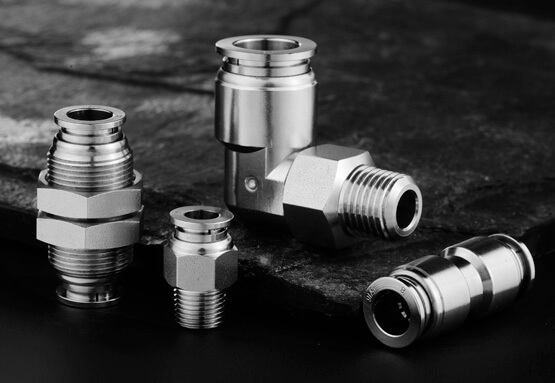Introduction
Pneumatic fittings and tubing are crucial components in many industries, including manufacturing, automation, transportation, and construction. These components allow compressed air or gas to flow through a system and power various machines and tools. However, choosing the right type of fittings and tubing can be challenging, as there are many factors to consider, such as size, shape, material, and application. One of the most popular materials for pneumatic fittings is stainless steel, which offers several advantages over other materials, such as brass, plastic, or aluminum. In this article, we will explore the benefits of choosing stainless steel pneumatic fittings, including their durability, corrosion resistance, hygiene, cleanliness, compatibility, versatility, cost-effectiveness, and sustainability. Whether you are a seasoned professional or a novice in the field of pneumatics, this guide will provide you with valuable insights and practical tips for selecting and using stainless steel fittings in your applications.
Durability and Corrosion Resistance
Stainless steel is a popular material for pneumatic fittings and tubing due to its exceptional durability and corrosion resistance. Here are some of the key points to consider:
- Strong and durable: Stainless steel is a tough and robust material that can withstand high pressure, temperature, and vibration without cracking, bending, or breaking. This makes it ideal for applications that require reliable and long-lasting pneumatic systems, such as manufacturing, automation, or transportation.
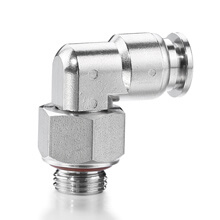
- Resistant to corrosion: Stainless steel is highly resistant to corrosion, rust, and chemical damage, thanks to its chromium content. This property makes it suitable for use in harsh or corrosive environments, such as marine, chemical, or food processing industries. Stainless steel fittings and tubing can last for years without deteriorating or requiring frequent maintenance, which can save time and money in the long run.
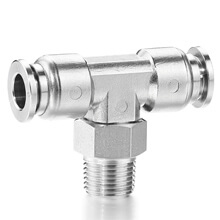
- Examples of applications: Stainless steel pneumatic fittings and tubing are commonly used in various industries, such as automotive, aerospace, medical, and semiconductor. For instance, stainless steel fittings can be found in hydraulic brake systems, fuel injection systems, and engine cooling systems in cars and trucks. Stainless steel tubing can be used in pneumatic cylinders, valves, and actuators in automation and robotics. Stainless steel fittings and tubing can also be found in air conditioning, refrigeration, and ventilation systems in buildings and homes.

In summary, stainless steel is a strong and durable material that can withstand high pressure, temperature, and vibration, while also being resistant to corrosion, rust, and chemical damage. These properties make it a popular choice for pneumatic fittings and tubing in various industries that require reliable and long-lasting systems.
Hygiene and Cleanliness
Stainless steel pneumatic fittings offer hygienic and sanitary benefits, making them suitable for industries that require strict hygiene standards. Here are some of the key points to consider:
- Hygienic and easy to clean: Stainless steel is a non-porous material that does not harbor bacteria, mold, or other contaminants. It is also easy to clean and sterilize, using simple methods such as wiping, washing, or autoclaving. This makes stainless steel fittings ideal for applications that require high levels of cleanliness and hygiene, such as food and beverage, pharmaceutical, or biotech.
- Crucial for hygiene standards: In industries such as food and beverage, pharmaceutical, or biotech, maintaining strict hygiene standards is essential to prevent contamination, spoilage, or infection. Stainless steel fittings can help ensure that the pneumatic systems are free from bacteria, viruses, or other harmful substances that could compromise the quality and safety of the products or processes.
- Compliance with certifications and standards: Stainless steel fittings may comply with various certifications and standards that ensure their quality, safety, and performance. For instance, the FDA (Food and Drug Administration) regulates the use of stainless steel in food contact surfaces, while ISO (International Organization for Standardization) sets standards for the quality and testing of pneumatic components. Other standards that stainless steel fittings may comply with include ASME (American Society of Mechanical Engineers), ASTM (American Society for Testing and Materials), or EHEDG (European Hygienic Engineering and Design Group).
In summary, stainless steel pneumatic fittings offer hygienic and sanitary benefits, as they are non-porous, easy to clean, and comply with various certifications and standards. These features make them suitable for industries that require strict hygiene standards, such as food and beverage, pharmaceutical, or biotech, where contamination or infection can have serious consequences.
Compatibility and Versatility
Stainless steel pneumatic fittings offer compatibility and versatility, making them suitable for a wide range of applications. Here are some of the key points to consider:
Compatible with various gases and liquids: Stainless steel fittings can be used with different types of gases, liquids, and chemicals, such as air, water, oil, gas, and steam. This makes them versatile and adaptable to different environments and processes.
Shapable, threadable, and weldable: Stainless steel can be shaped, threaded, or welded to fit different configurations or designs, depending on the specific requirements of the application. This flexibility allows for customization and optimization of the pneumatic system.
Examples of fittings: Stainless steel fittings come in various types and sizes, depending on the application and the connection method. Some of the common types of fittings that can be made of stainless steel include:
- Push-in fittings: These fittings are designed for quick and easy installation without the need for tools or clamps. They are commonly used in pneumatic circuits that require frequent changes or adjustments.
- Compression fittings: These fittings use a compression ring or ferrule to create a leak-proof seal between the fitting and the tubing. They are suitable for high-pressure applications that require a tight and secure connection.
- Quick-connect fittings: These fittings allow for fast and easy connection and disconnection of pneumatic components, such as hoses, valves, and regulators. They are commonly used in applications that require frequent maintenance or replacement.
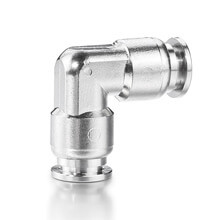
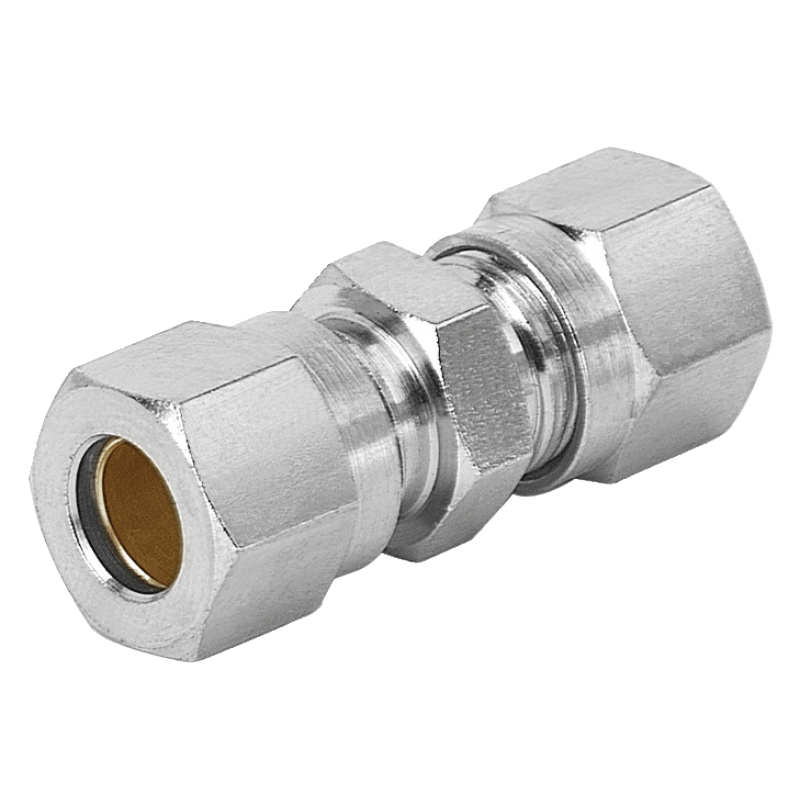
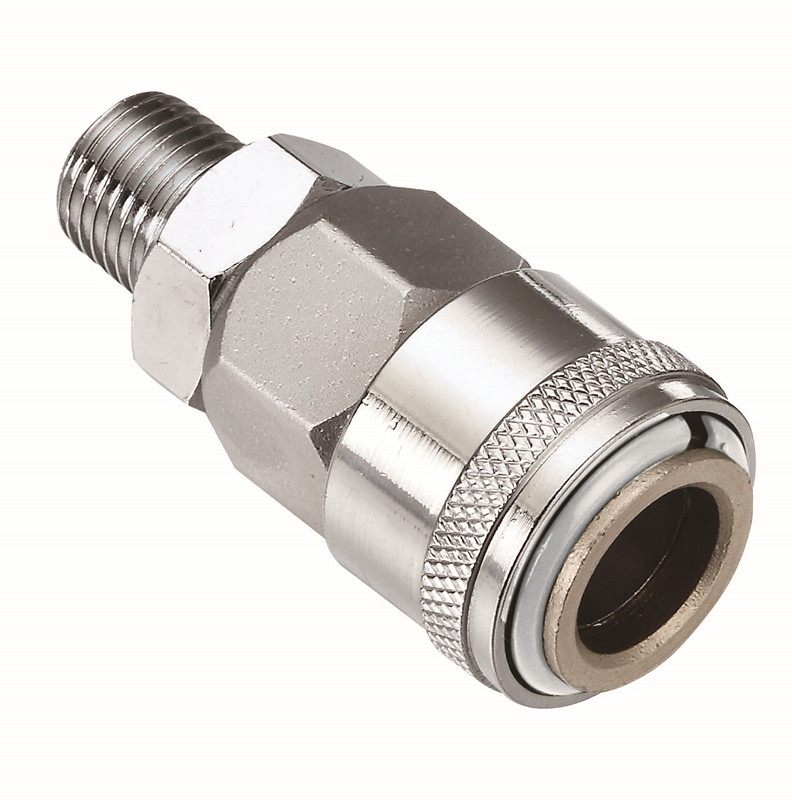
In summary, stainless steel pneumatic fittings offer compatibility and versatility, as they can be used with various gases, liquids, and chemicals, and can be shaped, threaded, or welded to fit different configurations or designs. They also come in different types and sizes, such as push-in fittings, compression fittings, or quick-connect fittings, to suit different applications and connection methods.
Cost-effectiveness and Sustainability
Stainless steel pneumatic fittings offer cost-effectiveness and sustainability benefits, making them a smart choice in the long run. Here are some of the key points to consider:
Cost-effective and durable: Although stainless steel fittings may have a higher initial cost than other materials, such as brass or plastic, they can be more cost-effective in the long run due to their durability and low maintenance requirements. Stainless steel fittings can last for years without corroding, rusting, or breaking, which reduces the need for frequent replacements or repairs. This can save money on labor, downtime, and material costs.
Sustainable and recyclable: Stainless steel is a sustainable material that can reduce waste and environmental impact. It is 100% recyclable, which means that it can be reused and repurposed without losing its properties or quality. This reduces the need for new raw materials and energy, which can lower the carbon footprint and conserve natural resources. Stainless steel fittings can also contribute to LEED (Leadership in Energy and Environmental Design) certification, which recognizes buildings and projects that promote sustainability and green design.
In summary, stainless steel pneumatic fittings offer cost-effectiveness and sustainability benefits, as they can be more durable and require less maintenance than other materials, and can be recycled and reused without losing their properties or quality. These features make them a smart choice for industries that value long-term performance, reliability, and environmental responsibility.
Conclusion
Stainless steel pneumatic fittings offer a range of benefits that make them a popular choice for various industries. In this article, we have explored the main advantages of choosing stainless steel fittings, including their durability, corrosion resistance, hygiene, cleanliness, compatibility, versatility, cost-effectiveness, and sustainability. These features make stainless steel fittings a reliable, safe, and environmentally friendly option for pneumatic systems.
When selecting pneumatic components for your applications, it is important to consider these factors and choose the best material and type of fitting for your specific needs. Stainless steel fittings can provide a long-lasting and cost-effective solution that meets the highest standards of performance and hygiene.
We encourage readers to explore our website and learn more about our range of stainless steel pneumatic fittings. Our sales team is available to provide expert advice and assistance in selecting the right components for your applications. Contact us today to learn more and experience the benefits of stainless steel pneumatic fittings.

